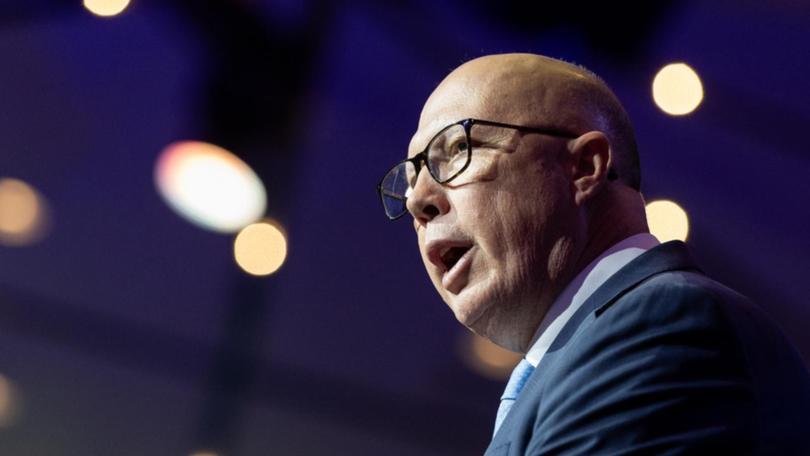Peter Dutton hits back after new modelling shows households power bills would soar with nuclear

Peter Dutton has defended his nuclear power proposal, rejecting modelling that suggests it would raise household energy bills by up to $665 a year on average and lead to significant power shortfalls.
The Opposition Leader announced in June that a future Coalition government would build seven nuclear power facilities – two small modular reactors and five large-scale sites – across the country to be operational by 2050.
He has yet to release the costings, or detail how much energy the sites would generate, but has said he will do so before the next election.
Sign up to The Nightly's newsletters.
Get the first look at the digital newspaper, curated daily stories and breaking headlines delivered to your inbox.
By continuing you agree to our Terms and Privacy Policy.Modelling by US think tank the Institute for Energy Economics and Financial Analysis, found that based on assessments of recent construction costs of plants in the US, UK, Finland and France and two proposed plants, bills would soar in order to cover the high cost of building the plants.
Under their analysis, released on Friday, the best case scenario for an average household was an annual increase of $383-$461, but could be as high as $1000 per year. The think tank found the average bill increase was $665 per year.
Mr Dutton rejected the analysis, arguing power bills had gone up under Labor.
“We need to deal with reality here, and this is Chris Bowen, who promised before the election that power prices would come down by $275. They’ve gone up by $1000,” the Opposition Leader told Channel 9.
“He’s predicting now that in 2037, your electricity bill will go up by $650. I mean, is that credible? Does anyone believe what Chris Bowen has to say? I suspect not.
“We need the intermittent power. We want the renewables, but when the sun’s not shining or the wind’s not blowing, we need to have a baseload power.”
His panelmate, government minister Bill Shorten, blasted the Coalition for being hypocritical of Labor’s energy policy before it released the full details of its own.
“Your nuclear policy is more lost than Burke and Wills,” Mr Shorten said.
“You don’t know where you are. Just put up your numbers.”
It came as Energy Minister Chris Bowen released departmental analysis, which forecasts a demand-supply gap of between 18 and 49 per cent by 2035, based on the limited detail available from the Coalition about their energy policy.
The energy regulator’s reliability standard is 0.002 per cent.
The Australian Energy Market Operator forecasts the east coast will need to replace existing coal generation plus add an extra 67GW in capacity by 2035, meaning a virtually doubling of the current grid output will be needed to meet future demand of 153.5GW.
Mr Bowen said the Coalition’s nuclear proposal would only provide a maximum of 11GW of supply by 2050, or less than four per cent of what would be needed to meet total demand.
“Detailed government analysis of AEMO forecasts show the Coalition’s plan to pause new renewable investment and defund critical transmission infrastructure needed to increase network capacity now, will result in massive supply shortages over the next decade,” Mr Bowen wrote in The Australian.
He said that would be “catastrophic” for the economy and for Australians.
Mr Dutton will give a speech next Monday on the potential of a nuclear-powered Australia, but is not expected to unveil its full policy package until later this year.

